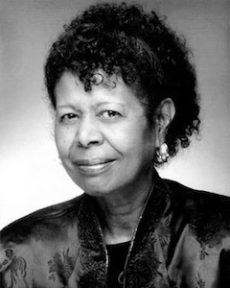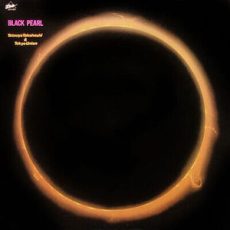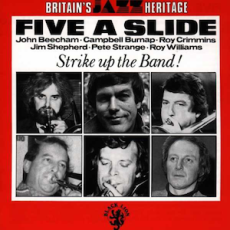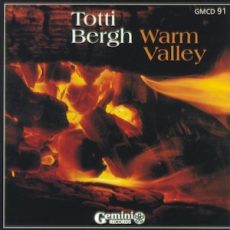
Jazz Poems
ROSE SOLITUDE
For Duke Ellington
I am essence of Rose Solitude
my cheeks are laced with cognac
my hips sealed with five satin nails
i carry dream and romance of new fools and old flames
between the musk of fat
and the side pocket of my mink tongue
Listen to champagne bubble from this solo
Essence of Rose Solitude
veteran from texas tiger from chicago that’s me
i cover the shrine of Duke
who like Satchmo like Nat (King) Cole
will never die because love they say
never dies
I tell you from stair steps of these navy blue nights
these metallic snakes
these flashing fish skins
and the melodious cry of Shango
surrounded by sorrow
by purple velvet tears
by cockhounds limping from crosses
from turtle skinned shoes
from diamond shaped skulls and canes
made from dead gazelles
wearing a face of wilting potato plants
of grey and black scissors
of bee bee shots and fifty red boils
yes the whole world loved him
I tell you from suspenders of two-timing dog odors
from inca frosted lips
nonchalant legs
i tell you from howling chant of sister Erzulie
and the exaggerated hearts of a hundred pretty
women
they loved him
this world sliding from a single flower
into a caravan of heads made into ten thousand
flowers
Ask me
Essence of Rose Solitude
chickadee from arkansas that’s me
i sleep on cotton bones
cotton tails
and mellow myself in empty ballrooms
i’m no fly by night
look at my resume
i walk through the eyes of staring lizards
i throw myneck back to floorshow on bumping goat skins
in front of my stage fright
i cover the hands of Duke who like Satchmo
like Nat (King) Cole will never die
because love they say
never dies
JAYNE CORTEZ
from Jazz Poems ~ Selected and Edited by Kevin Young
More Posts: book,classic,collectible,history,jazz,library,poet

Daily Dose Of Jazz…
Tatsuya Takahashi was born on December 24, 1931 in Tsuruoka, Yamagata, Japan.
In the early 1950s Tatsuya played on US military bases and later in the decade moved to Tokyo, Japan. He worked with Keiichiro Ebihara from 1961, and by 1966 was leading his own ensemble, Tokyo Union, which remained active until 1989.
The 1970s saw him playing at the Monterey and Montreux Jazz Festivals. After leaving Tokyo Union, Takahashi worked in jazz education, and in 1996 founded a new ensemble, Jazz Groovys.
Saxophonist Tatsuya Takahashi died on February 29, 2008 in Tokyo, Japan.
More Posts: bandleader,history,instrumental,jazz,music,saxophone

Daily Dose Of Jazz…
Peter Charles Strange was born December 19, 1938 in Plaistow, Newham, London, England and played violin as a child before switching to trombone as a teenager. His first major gig was with Eric Silk and his Southern Jazz Band when he was just 18 years old.
In 1957, Silk’s clarinetist Teddy Layton split off and formed his own band, and Strange went with him. Called up for National Service in 1958 and became a bandsman in the Lancashire Fusiliers, whilst serving in Cyprus. Following this he played with Sonny Morris, Charlie Gall, and Ken Sims, before joining Bruce Turner from 1961 to 1964.
1964 saw Turner in a 10 year partial retirement for about 10 years, playing but when he returned Peter played with Turner permanently in 1974, and in 1978 co-founded the Midnite Follies Orchestra with Alan Elsdon.
In 1980, he founded the five-trombone ensemble, Five-A-Slide, which featured Roy Williams and Campbell Burnap. He joined Humphrey Lyttelton’s band in 1983, and remained with the ensemble until the leader died. With the other members of the Lyttelton band, Strange performed on the 2001 Radiohead album Amnesiac.
Trombonist, arranger and composer Pete Strange, who played with his group The Great British Jazz Band, died of cancer in Banstead, Surrey, England on August 14, 2004 at the age of 65.
More Posts: arranger,bandleader,composer,history,instrumental,jazz,music,trombone

Daily Dose Of Jazz…
Juhani Aaltonen was born December 12, 1935 in Kouvola, Finland. He began playing professionally at the end of the Fifties. He played in a sextet led by Heikki Rosendahl during that time, and then studied flute performance at the Sibelius Academy and in the U.S. at the Berklee College of Music.
Moving back to Finland, he settled in Helsinki and began working both as a session musician and with fusion groups. Late in the 1960s he formed a duo with Edward Vesala, played in the group Eero Koivistoinen and with Tasavallan Presidentti. He recorded with Thad Jones and Mel Lewis and with Heikki Sarmanto late in the decade and early 1970s. His debut album as a soloist, Etiquette, was released in 1974.
The following year Juhani became a member of the New Music Orchestra, and worked with the Nordic All Stars, Arild Andersen, and Peter Brötzmann before the end of the decade. The Eighties saw him working with the UFO Big Band, Jan Garbarek, Charlie Mariano, and others. He led a touring quartet from 1990 to 1992.
In 2001 he released a duo recording, Rise, and his trio album Mother Tongue won a Jazz-Emma in Finland. Saxophonist and flautist Juhani Aaltonen continues to perform as well as teach at the annual Nilsiä Music Camp.
More Posts: bandleader,flute,history,instrumental,jazz,music,saxophone

Daily Dose Of Jazz…
Theodor Christian Frølich Bergh, better known as Totti Bergh was born December 5, 1935 in Oslo, Norway. He began playing clarinet, and started learning to play the saxophone in 1952. By the time he turned 21 in 1956, he became a professional musician, becoming a regular member of Kjell Karlsen Sextet for three years, in addition to collaborating sporadically with Rowland Greenberg and other musicians on the Norwegian jazz scene.
He joined the Norwegian America Ships house orchestra on the voyage to New York City. In 1960 Totti succeeded Harald Bergersen as tenor saxophonist in Karlsen’s new big band and in the summer of 1961 he met his future wife Laila Dalseth, who joined the band.
He would go on to play with the bands of Einar Schanke, Rowland Greenberg, Per Borthen and in Dalseth’s orchestra. During the Nineties he played tenor and soprano saxophone with Christiania Jazzband and with Christiania 12.
Saxophonist Totti Bergh, who released several albums as a leader and whose music is reminiscent of Lester Young and Dexter Gordon, died January 4, 2012 in his home city.



